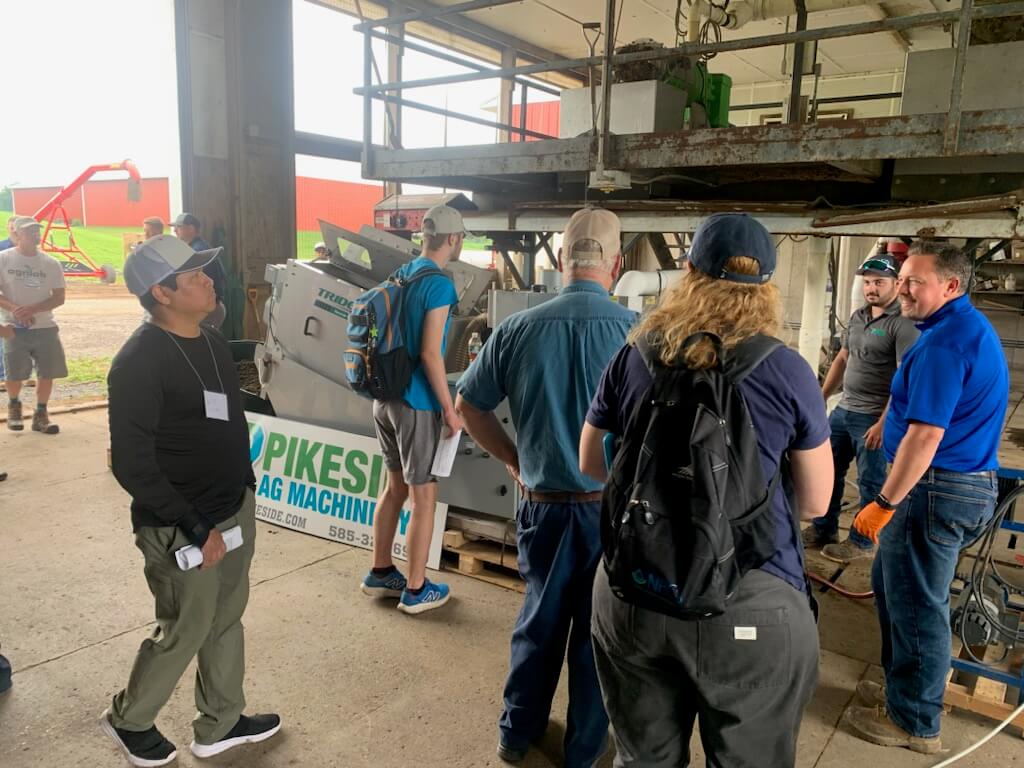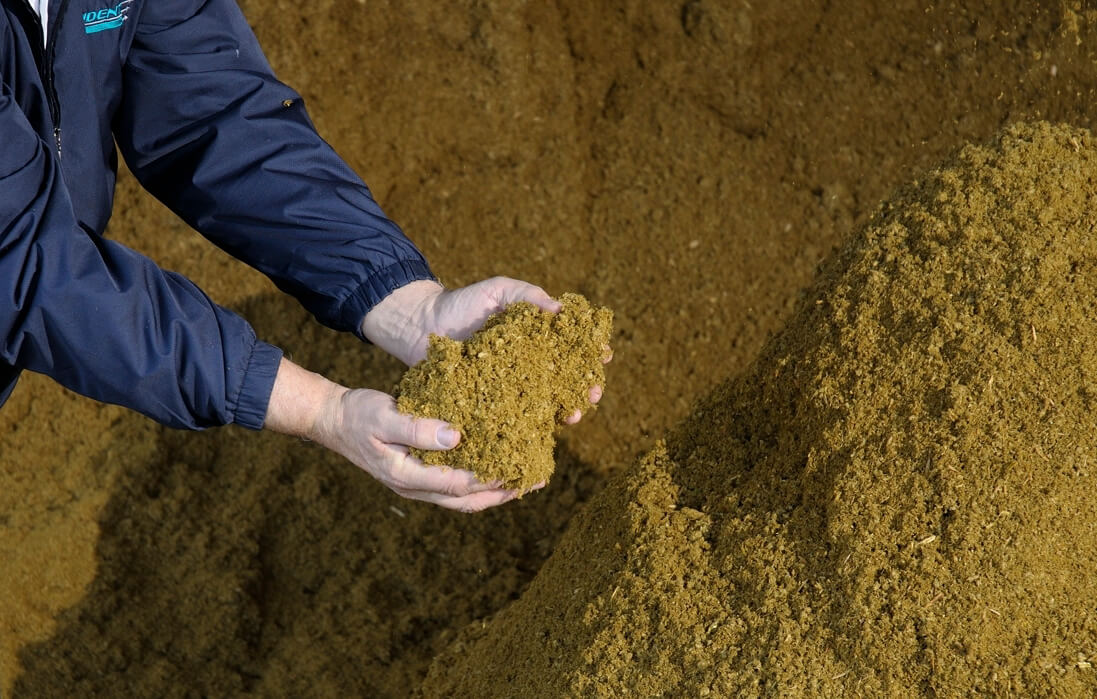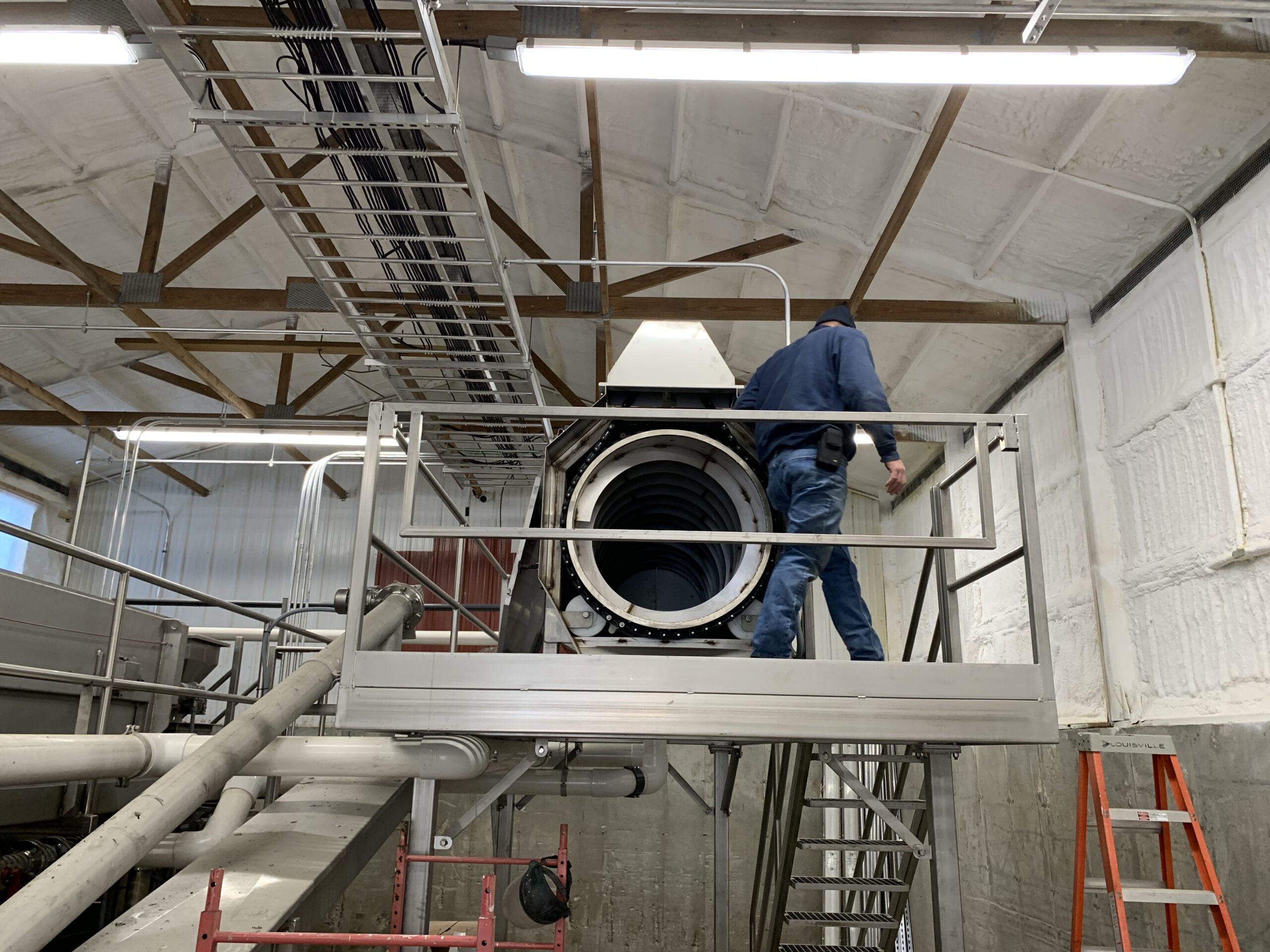Earlier this month our team had an opportunity to showcase advanced manure treatment with the…
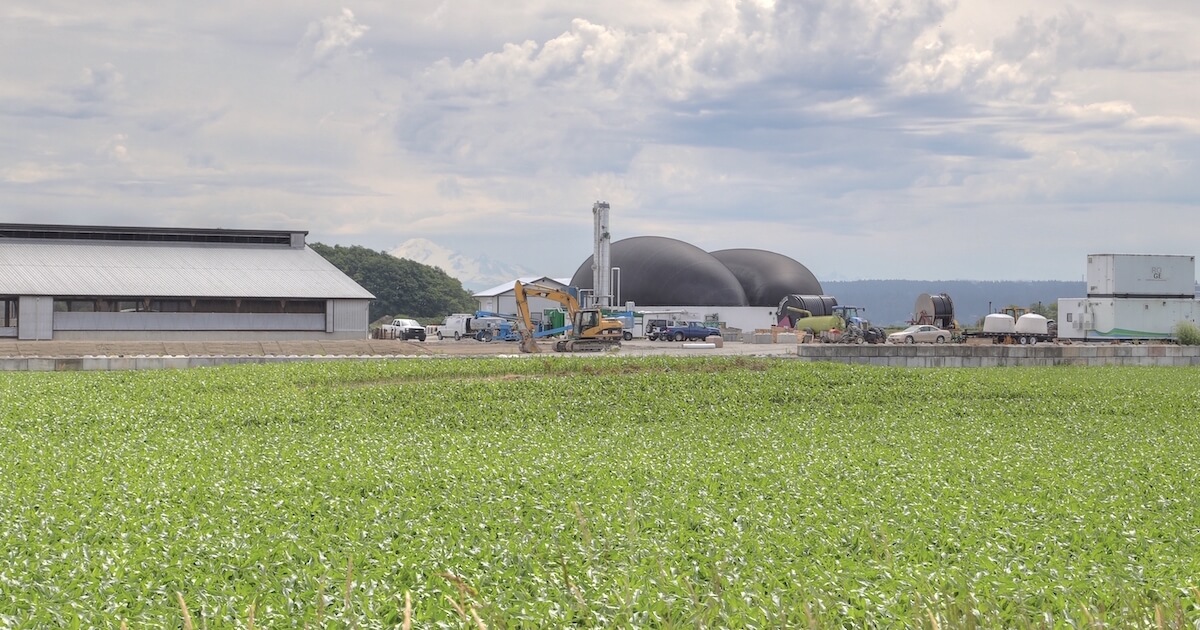
Enhancing farm based biogas facilities
Advanced pre and post digester treatment pays dividends.
Utilizing biogas as a renewable energy source in agriculture has been a well-established practice for many years. The European Biogas Association reports the number of biogas plants in Europe has nearly tripled between 2009 and 2017, to approx. 18,000. The majority are farm based. In the US the recent introduction of state and federal incentive programs created a major boost for biogas projects as well. Along with it emerges a growing demand for suitable treatment solutions that enhance the performance of farm based biogas plants. A natural fit for a manure processing expert like Trident.
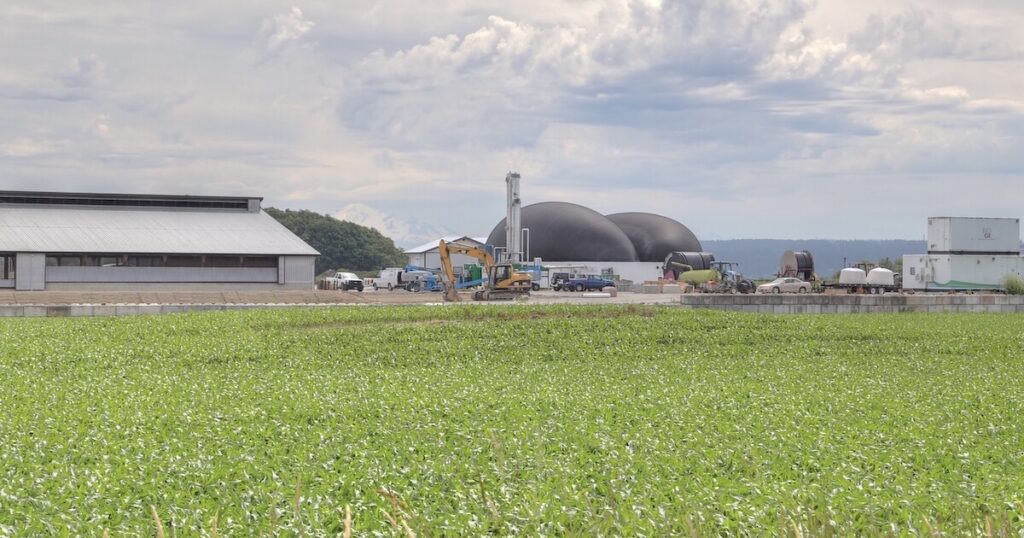
Image: A total mix anaerobic digester on a 400-cow dairy farm. Trident’s fine-solids separation system removes organic matter from digestate effluent reducing methane emissions from the farm’s storage lagoon.
PRE-THICKENING OPTIMIZES DIGESTER PERFORMANCE
Aside from different solid-liquid separation options for raw manure, Trident also provides treatment equipment and systems that integrate specifically with farm based biogas plants. This includes options for treatment in front of an anaerobic digester (AD), like pre-thickening digester feedstock, as well as post AD.
Separation treatment in front of a digester typically aims at conditioning the feedstock. This allows efficient digester sizing and helps optimize gas production. An internally fed drum screen is a very cost effective approach. It can remove debris or help pre-thicken the slurry. Fine-solids separation with a Wave Separator can be a suitable addition to concentrate volatile solids.
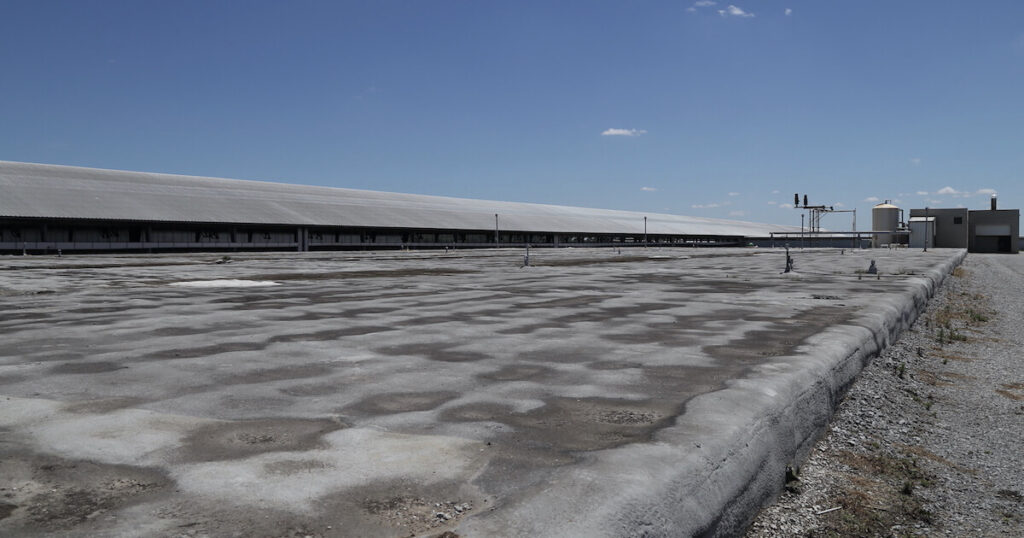
Image: A nutrient and water recovery system processes digestate. In this case after a DVO plug flow digester on a dairy in Indiana.
POST DIGESTER TREATMENT LOWERS CARBON INTENSITY SCORE
Post AD treatment includes fiber separation (e.g. for bedding recovery), nutrient recovery and different levels of water reclamation. Phosphorus and nitrogen are key nutrients that can be recovered from the digestate and then concentrated in solids form. Effluent water is recycled to improve sand separation or alley flush. When sent to long-term storage, in particular to anaerobic lagoons, another benefit comes into play. Low levels of nutrients and organic matter in the effluent water help reduce further decomposition in the lagoons, which results in lower methane emissions.
This can be an important element in a farm’s strategy to lower its carbon intensity (CI) score, which low carbon and renewable fuel programs commonly reward with higher credit monetization (see this Progressive Publishing article for more details on CI score). In basic terms: the stronger the revenue stream from manure-derived renewable natural gas the better the economic feasibility of the biogas project. And efficient digestate treatment that creates additional financial benefits for the farm is certainly an important part of it.
As one of the first companies to offer farm based digestate treatment solutions at a commercial level in North America, Trident has extensive experience in working with different digester types. This includes DVO plug flow digesters as well as total mix digesters from e.g. CH Four Biogas or PlanET Biogas.
We invite you to reach out to a Trident representative to discuss your particular goals. Our team will help assess how pre or post AD treatment can enhance your biogas operation.

